DVDs Round-Up 2 | reviews, news & interviews
DVDs Round-Up 2
DVDs Round-Up 2
Gus Van Sant, Sacha Baron Cohen, Shane Meadows and David Bowie's boy: this month's new releases sifted and sorted
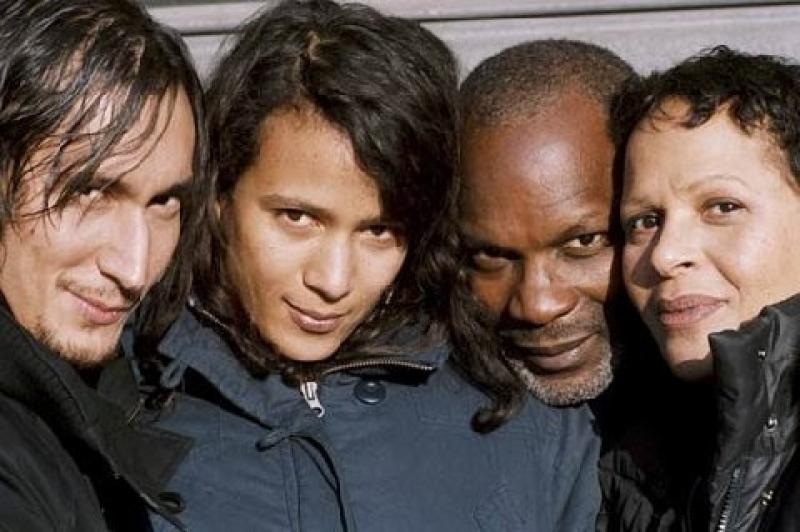
This month's survey of the latest films released on DVD assesses the work of directors old and new, male and female. Cinema's great early romantic Frank Borzage is available in a box set. The work of French auteur Claire Denis and American maverick Gus Van Sant are assessed. There is also an Austro-Hungarian flavour, with Sacha Baron Cohen's Brüno on the one hand and Márta Mészáros's classic 1984 study of communism, Diary for My Children, on the other.
DVD of the Month
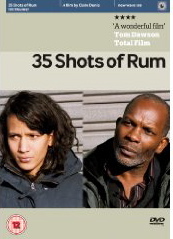 35 Shots of Rum, dir Claire Denis (New Wave)
35 Shots of Rum, dir Claire Denis (New Wave)
by Sheila Johnston
Sometimes it's the little moments in life that matter the most. There is a death in 35 Shots of Rum and also a marriage, but this is a film where casual, fleeting gestures are as treasured and revealing, and carry as much weight in their own way, as the great rites of passage. The story centres on Lionel (played by the director's regular star and male muse Alex Descas), a widower who lives for his grown-up daughter Joséphine (Mati Diop) who in turn is devoted to him. They are happy, entirely complete in their relationship. But its delicate balance is about to be tipped. A constellation of other characters orbits around this duo. Lionel works as a driver on Paris's RER suburban rail network, where a co-worker about to retire dreads losing the job that defined his identity. And both father and daughter are being courted by suitors: Lionel by a vibrant, sad-eyed neighbour who used to date him and is patently still in love, Josephine by a dashing young man from the flat upstairs who seems still to be mourning his parents' death. 35 Shots of Rum is, in all these cases, about the ties that bind, and the moment when the time has come for everyone to let go of old attachments.
The director, Claire Denis, doesn't do much more than hint at all the turmoil: these people know each other so intimately they don't have to spell things out. In one scene at the heart of 35 Shots of Rum, the main characters congregate in a little café after midnight to drink, dance and flirt together and, with an absolute minimum of dialogue, their tensions, attractions and shifting allegiances are mapped out with marvellous precision. In another, near the start of the film, Lionel and Joséphine, each arriving home from work, slip smoothly, silently, affectionately, into the familiar routine of preparing supper; you assume they are husband and wife until, finally he serves her dinner and she says, "Merci, papa." Denis's elusive approach employs movement, glances, dance and music (by Tindersticks, her regular collaborators) to do all the work of conveying heightened physical and emotional states.
The story makes a brief and surprising fourth-act detour to the beautiful medieval Baltic port of Lübeck (we suddenly learn late in the game that Lionel's wife was German). It's an opportunity to showcase a memorable cameo from the Fassbinder regular Ingrid Caven and linger on a magical lantern-lit scene in the dunes. Otherwise, though, the film unfolds entirely in the Paris banlieue. The city's multiracial outer suburbs have had a bad rap in French cinema, but Denis depicts her community as warm, relaxed and convivial in a way that eludes almost all other films set there, even such superior ones as L'Esquive or the Palme d'Or-winning The Class. Race and colonialism are discussed in one slightly too explicit classroom scene (Joséphine is studying social sciences at college). But, although most of the characters are either black or of mixed race, and are undoubtedly formed by these issues, they don't impact on their daily lives.
The power of 35 Shots of Rum is, rather, its universality. It was inspired partly by events within Denis's own family and partly by Late Spring (1949), by the director Yasujiro Ozu, who never married, lived with his mother throughout his life and dedicated himself, in an unrivalled suite of heartbreaking dramas, to minutely observing the bittersweet pull of family love. Such elements as the ubiquitous trains - a favourite Ozu motif - and the two rice cookers bought by father and daughter at the start of the film and which become by the end a quiet sign of their devotion - are small nods to the great Japanese master.
Over the last 20 years, Denis has emerged as a major force in French - indeed international - cinema, with work such as Beau Travail, Friday Night and White Materials (which stars Isabelle Huppert as a plantation owner caught up in the rush of African independence; a highlight of the London Film Festival, it opens next year). But 35 Shots of Rum is among her most emotional films, and one whose intimacy is perfectly suited to the small screen. 35 Shots of Rum on Amazon
Other releases
 Moon, dir. Duncan Jones (Sony Pictures Home Entertainment)
Moon, dir. Duncan Jones (Sony Pictures Home Entertainment)
by Jasper Rees
The artist formerly known as Zowie Bowie has taken understandable care to conceal his lineage by changing his name to plain old Duncan Jones. It would be interesting to know whether anyone would have guessed at his bloodline simply by watching the highly competent debut feature of the son of David Bowie. When Jones was a small boy in the 1970s, his father was singing a lot of anxious songs inspired by the moon landings, and was obvious casting for Nic Roeg’s The Man Who Fell to Earth. Moon is indeed set on a base on the moon which, design-wise, looks a knock-off from the cover art of Station to Station, while the operator played by Sam Rockwell might as well have been modelled on Major Tom, Bowie’s alienated spaceman in his tin can.
Rockwell’s character Sam is running a lunar space station with only a computer voiced by Kevin Spacey for company. His three-year contract has only two weeks to run until he can be reunited with his tauntingly beautiful wife and daughter, with whom he has contact only in pre-recorded video messages. But after crashing his lunar locomotive, he wakes up to discover that there’s another one of him hanging around the station. One of them is clearly a clone. But which? To reveal how Jones goes about resolving this intriguing teaser would give the game away in a plot which satisfyingly meshes existential self-questioning with conventional thriller elements. It suffices to say that Rockwell teases two intriguingly different performances out of himself. The hand-made special FX are top-of-the-range: listen to the commentary of the four blokes responsible for further enlightenment. And Jones is decidedly launched on his own odyssey. It remains to be seen whether he’ll remain in space or fall to earth. Moon on Amazon
 Brüno, dir. Larry Charles (Universal Pictures)
Brüno, dir. Larry Charles (Universal Pictures)
by Adam Sweeting
Axed from his job hosting Austria’s top TV talk show, Funkyzeit, thanks to outrageous behaviour with a Velcro jumpsuit, the wide-eyed and idealistic fashion journalist Brüno sets off to Hollywood to seek his fortune. The consequence is sort of son-of-Borat, as Sacha Baron Cohen’s Bruno outrages politicians, rednecks and talk-show audiences with buttock-clenching chutzpah, but it was never going to be possible to repeat the shock-and-awe impact of the former. Where Borat’s secret weapon was his guilefully-cultivated ignorance, Brüno deploys the terror weapon of extreme gayness.
Thus we have scenes of him trying to seduce an appalled Republican congressman and telling a group of macho outdoorsmen round a campfire that “ve are like zer Sex und der City girls”, while elsewhere he takes demonstrations of mechanical sex aids to unprecedented extremes. His fetish for “anal bleaching” may be new to many viewers. Actually some of Baron Cohen’s Brüno TV sketches were stronger than the material here, but when he hits the spot the effect is atomic. Persuading Paula Abdul to use a Mexican worker as a chair, for instance, amounts to a haiku-sized critique of American capitalism, while Bruno’s attempt to bring peace to the Middle East ends in uproar when he confuses humous with Hamas. Admitting to a talk show audience that he swapped an iPod for his new African baby almost provokes an authentic lynching. The laughs are frequently drowned in sheer bad taste, but you still keep asking yourself: “Did he really dare to do that?” Brüno on Amazon
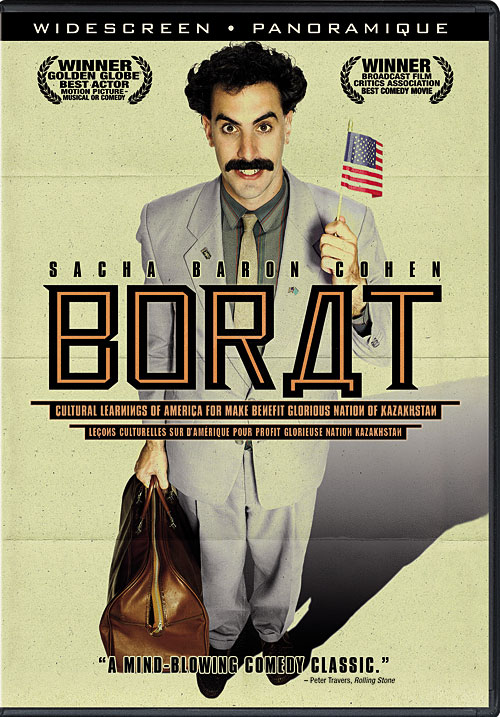 Borat, dir. Larry Charles (20th Century Fox)
Borat, dir. Larry Charles (20th Century Fox)
by Adam Sweeting
In which Kazakhstan’s fourth most famous celebrity, TV reporter Borat Sagdiyev, travels to the USA to make a documentary and engage in instructive cultural exchanges with the natives. The Kazakhstani authorities were ridiculed for complaining about the film, but surely this was exactly what they were supposed to do. Blundering idiotically around America, obsessed with tracking down Pamela Anderson, Borat is a walking billboard for racism, sexism, anti-Semitism and homophobia, portraying his homeland as a barbarous wilderness where Jews are thrown down wells and women are lower than farm animals. The argument that his behaviour was designed to expose the prejudices of the pitifully backward Americans never felt entirely convincing, though the question of how he was able to lure his victims to their own destruction hangs tantalisingly over the production. The real point is Sacha Baron Cohen’s willingness to take satirical provocation to suicidal extremes, as when he serenades beer-drinking cow-folk at a Texas rodeo with a grotesque parody of "The Star-Spangled Banner", or subjects a room full of respectable, God-fearing citizens to insults about disabilities and bodily functions. The naked wrestling scene with his fat, hairy producer Azamat has lost none of its power to trigger the viewer’s gagging reflex. Sometimes you cry tears of laughter, sometimes you cry in pain. Now out on Blu-ray. Borat on Amazon
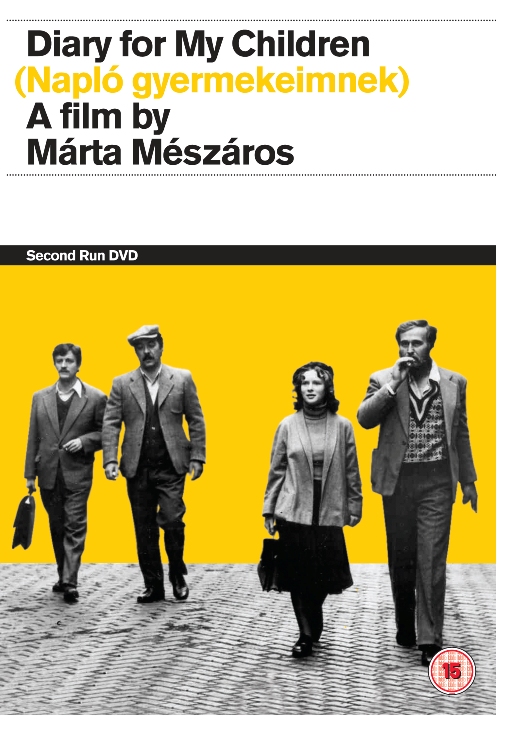 Diary for My Children, dir.Márta Mészáros (Second Run DVD)
Diary for My Children, dir.Márta Mészáros (Second Run DVD)
by Jasper Rees
It’s easy to assume, especially in an autumn of 20th-anniversary celebrations, that there was once a clear before and after; that before everything collapsed, artists under Communism couldn’t say what they wanted. After, they could. Diary for My Children has been re-released by the excellent Second Run DVD, a label which breathes life into a remarkable back catalogue of neglected European classics from both sides of the Iron Curtain.
Like many films from the Soviet bloc – the films of Andrzej Wajda come to mind, and the Czech New Wave - this is one of those works that muddies the waters. As she explains in an interview available as an extra, director Márta Mészáros wanted to make this film above all others as she embarked on her career in features in the late 1960s. She had cut her teeth in documentaries, and burned to shoot a semi-autobiographical story of a teenage girl returning orphaned to Hungary in the late 1940s after a stint in the Soviet Union, where her father had fallen foul of the regime and disappeared, while her mother had died of typhoid. The kernel of the story was inflammatory: that after the war the young female protagonist witnessed in Hungary the growth of ideologically inspired oppression which had blighted the lives of millions in the Soviet Union. Her producer naturally wouldn’t hear of it. It was only several films later, and after winning the Golden Bear in Berlin in 1975, that she was eventually given the green light to embark the first of a trilogy of Diary films.
It seems remarkable that a film so strongly critical of Communism could slip past the censors. But as Mészáros reveals, it was hurried into production before anyone in authority could object. Its fate abroad varied: in Cannes it won the Special Jury Prize in 1984, where Mészáros thanked the festival “on behalf of women directors”; in the Soviet Union, the prints were fraternally lost, presumed destroyed, for years. It had since been named as one of Halliwell’s 1000 Greatest Films.
It is a quirk of Eastern Bloc filmmaking that women were given a chance to direct far more than in the English-speaking world. And the female hand on the tiller feels part of the success of Diary for My Children. The teenage Juli (Zsuzsa Czinkóczi, who played Mészáros’s alter-ego in all the Diary films) returns with other Hungarians from Soviet exile in 1949. She is taken in by Magda, a stern party apparatchik whose efforts to be a mother-figure provoke in her a spirit of ungovernable rebellion. Juli seeks escape in the cinema, until she is banned from going. But there is no abolition of memory: frequent flashbacks transport her to the paradise lost of her prelapsarian childhood. A father figure duly enters her life in the form of János, an old activist with maverick tendencies (he is played by Jan Nowicki, who in a pointed piece of double casting also plays Juli’s father.)
In other hands, perhaps Juli’s battles with the moral and intellectual corruption of the fixed idea might have been over-flavoured. But for all the symbolic flourishes it is never less than personally felt, and rooted in experience. János might have easily been boiled down to Communism with a human face. Magda, uniformed and joyless (and resident of a very comfortable flat), is clearly the embodiment of a grim paternalistic regime - she is even a prison governor, for goodness’ sake. But she is also a flesh-and-blood woman, poignantly childless, who is impotent to stimulate love in Juli.
Mészáros shot in black and white: the aesthetic is “Party like it’s 1949”. In one of the film’s most delicious potshots, Juli goes to the party of a bespectacled classmate whose father is something very high up in the regime. The house, as a consequence, is grotesquely, comically spacious. Juli finally escapes to live with János and his disabled son, only for history to be repeated. As her father once was, János is taken away by the secret police. In the film’s mournful coda, Juli visits him in prison and quietly explains her daily routine: the spirit has been crushed out of her. The only glimmer of hope is that the year is 1953. Stalin, gloriously hymned in cinema screens across the land, will soon be dead. But beyond that lurks 1956, when Hungarian hope will be extinguished all over again. That is dealt with in the next of Mészáros’s Diary trilogy. If Second Run DVD could arrange to release that too... Diary for My Children on Amazon
 Colin, dir Marc Price (Spirit Entertainment)
Colin, dir Marc Price (Spirit Entertainment)
By Sheila Johnston
This cheapissimo British zombie apocalypse flick was made - officially - for £45, just over seven times the cost of the DVD (it makes the $15 million budget for Paranormal Activity look like a king's ransom). Whether or not you believe that figure - and it's clear a few favours were called in, even if it were true - you do justifiably wonder whether Colin's cheapness is its main, or even its only selling point. The first-time director Marc Price is not without talent: there are some neat touches of humour, an imaginative use of music and sound design and moments of genuine emotion in the intimate scenes between Colin, the nice suburban-boy-turned-zombie, and his horrified family. The small screen should help mask the dodgy production values, though it will also magnify the film's chief liabilities: the manic shaky-cam and Stygian lighting which immediately come into play each and every time there's a big crowd setpiece and which make it near-impossible to discern what's going on. Still, Colin is certainly better suited to an evening on the couch with a six-pack than to a big-night-out at the multiplex, even if aspiring directors might prefer to put the £5.98 towards their own first movie. Colin on Amazon
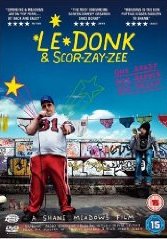 Le Donk and Scor-zay-zee, dir Shane Meadows (Warp Films)
Le Donk and Scor-zay-zee, dir Shane Meadows (Warp Films)
by Ryan Gilbey
Shane Meadows’s slight but often cringingly funny mockumentary profiles an irredeemably bitter roadie called Le Donk (real name: Nicholas), played by Paddy Considine, whose soulful eyes gleam even in his most repugnant moments. The film’s conceit is that Meadows has pitched up on Donk’s doorstep to shoot a documentary about him. We get to meet Scor-zay-zee (Dean Palinczuk), a rotund young rapper managed by Donk, as well as the roadie’s ex-girlfriend (Olivia Colman), who is pregnant with his child but living with another man. On the way to an “Arctical Monkeys” gig, Donk threatens to dump the crew on the roadside when he discovers he’ll be sleeping in the van, rather than in a hotel, to preserve documentary authenticity; it’s merely one instance among many of Donk losing what little cool he has.
Meadows displays that customary knack of putting his cast at ease, and his cameras in the right place, which has ensured that even his most inconsequential work shimmers with warmth. That may be how he gets away with the daft climax here, as Donk and Scor-zay-zee land a place on the bottom of the bill at the Arctic Monkeys’ Old Trafford show. The crowd’s bemused reaction is a treat. Le Donk on Amazon
 The Snapper, dir. Stephen Frears (BBC Films)
The Snapper, dir. Stephen Frears (BBC Films)
by Jasper Rees
More than 20 years ago Roddy Doyle embarked a trilogy of novels set in Barrytown, a fictional working-class neighbourhood of north Dublin. The three books all came to be filmed, most notably The Commitments in 1991 by Alan Parker. Five years on the last one to come out was The Van, set during one of those World Cups when the manic Irish turned the footballing planet green. The middle novel is the most intimate of the three. The Snapper tells of the shifting of tectonic plates in the Rabbitt family when the oldest of five falls pregnant after a night on the tiles. In the film version directed by Stephen Frears their name was changed to Curley because 20th Century Fox, who owned the rights to The Commitments, didn’t want the same characters turning up in another film. You wonder whether somewhere in New England John Updike, author of the Rabbit novels, quietly purred his approval.
Unlike Parker’s Irish homage to soul, The Snapper is a thoroughly domestic affair. It was filmed for television in 1993 and, despite the odd heaving nightclub scene, never looks like it craved a larger life on the big screen. Colm Meaney, so dour as Don Revie in The Damned United, is wonderfully bright as Jimmy, the paterfamilias who is as thrown by the random insemination of his daughter as she is herself. Tina Kellegher plays 19-year-old Sharon with a lovely combination of light wryness and heavy-shouldered vulnerability. Theirs is an unconventional take on the regular love story: a father’s conditional adoration of his daughter is all too rarely explored in comedy. It’s true that Frears doesn’t quite seem to know whether he is presiding over a rambunctious comedy or something starker. One of the sons has just returned from peacekeeping in Bosnia: the plot has no idea where to put such dark material. But, unlike the shaving foam adorning the face of Jimmy’s youngest daughter, The Snapper’s heart is in exactly the right place. The Snapper on Amazon
Re-release of the Month
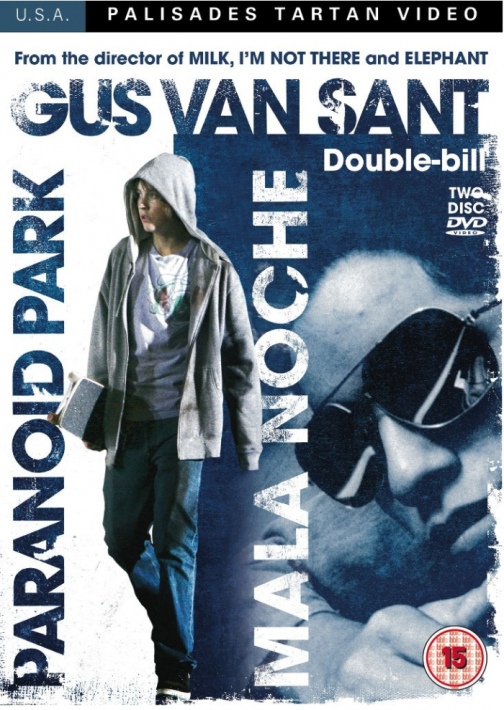 Mala Noche/Paranoid Park, dir. Gus Van Sant
Mala Noche/Paranoid Park, dir. Gus Van Sant
by Ryan Gilbey
There are numerous contenders for the title of Most Adventurous Director of the Decade but few have a more pressing claim than Gus Van Sant. Not for his Academy-pleasing Milk - wonderful though that film was - so much as the experimental cycle that began in 2002 with Gerry (Matt Damon and Casey Affleck get lost in the desert), continued through the Palme d’Or-scooping Elephant (about a Columbine-style massacre) and onto Last Days (the woozy portrait of a Kurt Cobain-esque rock star) and the 2007 Paranoid Park, in which a teenage skateboarder reflects on the part he played in the death of a security guard. These films share elliptical editing, fragmented narratives, evocative cinematography (by Harris Savides, with the exception of Paranoid Park, shot by Christopher Doyle) and innovative sound design (courtesy of Leslie Shatz). Now there’s an opportunity to trace the director’s continuity with the release in a double-pack of his 1985 debut Mala Noche along with Paranoid Park.
Movies about thwarted or unrequited love are ten-a-penny; add monochrome photography and a budget of zero and you’ve got 80 per cent of what turns up in film festivals all over the world, but Mala Noche is different. In scrutinising the yearning of a white store clerk, Walt (Tim Streeter), for a Mexican street-kid, Johnny (Doug Cooeyate), Van Sant reveals the capacity for exploitation in even those who consider themselves good liberals. Walt makes the mistake of regarding Johnny as dumb, referring to the boy as an “ignorant Mexican”. In fact, the film is careful to show that Johnny knows exactly how to play Walt like a fiddle; he’s a fox in both senses of the word. In this subtly suspenseful dynamic, the picture reveals the political implications of Walt's desire. It’s all about economics: Walt offers hard cash to sleep with the unattainable straight boy, and from then on, Van Sant's camera picks out in grubby, fetishistic close-up every exchange of money, innocuous or otherwise.
Paranoid Park is a more impressionistic work, full of haunting performances from a young and largely non-professional cast, particularly Gabe Nevins as the cherubic, blank-faced hero. The director is at the height of his powers here, pulling off disorienting time-slips in the narrative, and assembling an audacious soundtrack of unlikely bedfellows: thrash-metal, the acoustic musings of the late Elliot Smith, and excerpts from Fellini scores by Nino Rota. Even if the characters’ skate-punk angst is not to your taste, it would be hard to deny that Van Sant enables us to see life, and cinema, through fresh eyes, and to hear it with fresh ears also. 2-CD pack on play.com here. Individual films on Amazon: Paranoid Park and Mala Noche
Box Set of the Month
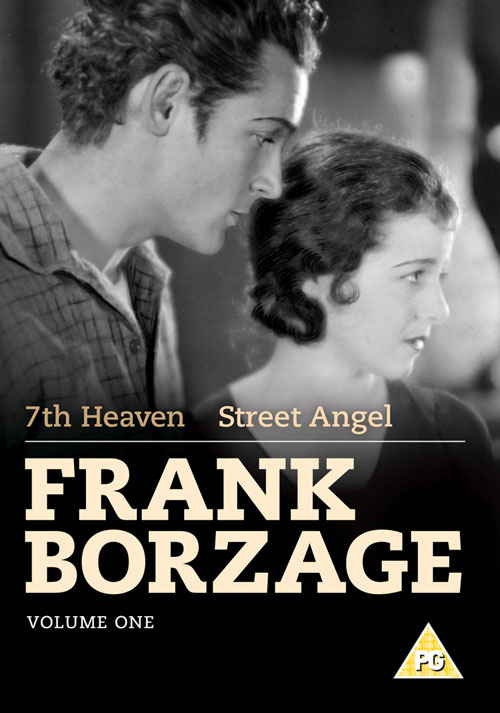 Frank Borzage, Volumes One and Two (BFI)
Frank Borzage, Volumes One and Two (BFI)
by Sheila Johnston
"Chico - Diane - Heaven!" Was there ever a more succinctly, gloriously rhapsodic intertitle in all of the history of silent cinema? Thrown together by force of circumstance, the protagonists of 7th Heaven - the first of four films in this collection - have just acknowledged their mutual passion, at the very moment when broader events will tear them apart. Diane is a Paris prostitute, while Chico works in the sewers underneath a street known - delightfully if improbably - as The Hole in the Sock; the gutter would actually be a step up in the world for him. But now he has rescued this fallen woman and swept her away: they have climbed seven flights of stairs - followed by the camera in a single remarkable vertical tracking shot - up to Chico's fabulous garret apartment with views across the rooftops of Paris to the Sacré-Coeur in one direction and the Eiffel Tower in the other (the film, like the others in this set, was shot in the studio, it goes without saying). And here, far above the grime and squalor, they have created their own private heaven to nurture an almost unbearably intense private passion.
It is an archetypical scenario for Frank Borzage (1894-1962), habitually described as one of the cinema's great romantics. Yet there's a very sharp edge to these films as well. 7th Heaven features voyeurism, flagellation, prostitution and absinthe addiction - and that's just in the first five minutes. It ends with the carnage of the Battle of the Marne. In Liliom, a Hollywood-Budapest waitress has an illegitimate child by a sleazy, layabout fairground barker, who likes to beat her up although he loves her, and can't mend his ways even when given a second chance in the Afterlife (the same story later inspired the Rodgers and Hammerstein musical Carousel). Set in Hollywood-Naples, Street Angel is about a destitute woman who joins a circus and has a troubled relationship with a painter who almost murders her. Love triumphs but only just (and, in Liliom, barely even that). All these films were made just before the Hays Office, with its strict censorship code, was set up in 1930.
At their centre is the great romantic pairing of the tall, ruggedly handsome Charles Farrell and the tiny, doll-faced Janet Gaynor, a couple whose powerful chemistry illuminates the collection's three silent movies, 7th Heaven (1927), Street Angel (1928) and Lucky Star (1929): Gaynor won the first ever Best Actress Oscar for the first of these, though her simperingly submissive character is an acquired taste for modern viewers. Made at the start of the sound era, Liliom (1930) is, like many of the first talkies, a little stiffly staged, but boasts strange, stark, Expressionistic sets and a crazy coup du cinéma in which a train bursts through a window to whisk off its dying hero on a celestial viaduct through the clouds. Combined, this quartet of films - and extended extracts from Borzage's astonishing lost film The River - adds up to a couple of evenings of uncommonly exquisite viewing pleasure. Buy Borzage vol 1 on Amazon; and volume 2 here
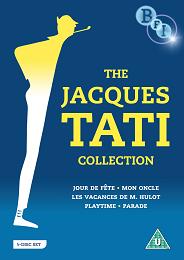 The Jacques Tati Collection (BFI)
The Jacques Tati Collection (BFI)
by Sheila Johnston
A brain-teaser: what do the Japanese director Mikio Naruse, Hilary Mantel's Booker Prize-winning historical novel Wolf Hall, and the dark thrillers of Jean-Pierre Melville have in common? They're all listed on Amazon as items which customers who bought the Jacques Tati Collection have also purchased. Tati's films were, namely, sui generis, wholly unlike anything which went before and not quite like anything that succeeded them. There's no single obvious point of comparison,
Fastidiously conceived, his output was small and extremely select, and this box-set gathers all his features with the exception of Traffic (1971). The five films begin with the gentle provincial comedies of Jour de Fête (1949), starring Tati as an eccentric postman, and Mr Hulot's Holiday (1953), which launched his famous alter ego, decked out in raincoat, pipe, hat and too-short trousers, upon the world. His vision changed complexion gradually with Mon Oncle (1958), wherein the shambolic Hulot locks horns with his nouveaux-riches in-laws and their kitsch, futuristic home, reaching its apogee with Play Time (1967), his masterwork, which took three years to shoot and eventually bankrupted him. In that, Hulot wanders around, no longer the protagonist now but almost a bit player, on the fringes of a beautiful, glittering, terrifyingly impersonal hyper-modern metropolis.
Tati's slow-burning, elaborately choreographed films are probably seen to their full advantage on the big screen (and heard: with virtually no dialogue, the sound effects are king). Play Time, in particular, was shot in 70mm and its wide-screen images are jam-packed with detail and incidental sight gags. There are several opportunities to catch these films in cinemas next month, with Tati retrospectives at both the Barbican and the French Institute. But the box-set is a must-have item nonetheless, for the breathtaking ambition and originality of his work repay repeated viewing. The Jacques Tati Collection on Amazon
Stinker of the Month
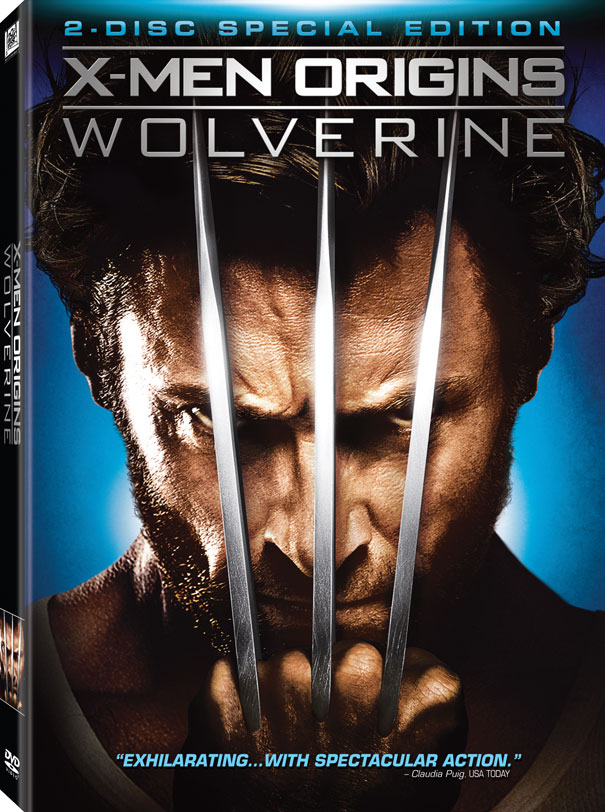 X-Men Origins: Wolverine, dir. Gavin Hood (20th Century Fox Home Entertainment)
X-Men Origins: Wolverine, dir. Gavin Hood (20th Century Fox Home Entertainment)
by Anne Billson
If fanboys were upset when Brett Ratner replaced Bryan Singer as director of X-Men: The Last Stand, they're probably ready to slit their wrists after X-Men Origins: Wolverine, directed by Gavin Hood. Whatever pretensions the X-Men films might once have had to seriousness - and this is a franchise which began with a scene in a Nazi concentration camp - have now given way to dumb action movie clichés such as hanging off helicopters or walking away from big explosions. There's even some Bourne Identity-like amnesia tossed into the plot, which is appropriate since it's all pretty forgettable, though I did like the hint that the partial meltdown at Three Mile Island in 1979 was, shall we say, no boating accident.
But let me see what I can remember. Hugh Jackman reprises his role as James Logan aka Wolverine, a super-strong mutant with a big bike, even bigger sideburns and fingers which sprout claws. He's Canadian, but is seen during the credit sequence fighting in the American Civil War (just one of many touches which suggest the film-makers haven't given their story much thought). The plot is propelled by a quest for vengeance after his New Agey girlfriend is sliced up by his half-brother (Liev Schreiber), who has gone over to the Dark Side.
That's probably all you need to know, except that a bunch of other mutants from Marvel's X-Men comics pop up, to not very interesting effect, and Logan agrees to let a shady General (Danny Huston) infuse his skeleton with adamantium, which essentially makes him unkillable - not that he was terribly vulnerable before that, since he's approximately 147 years old but doesn't look a day over 40. In previous X-Men movies Wolverine was a pretty cool character; here, in his own back-story, he's a bit of a humourless bore. X-Men Origins on Amazon
Add comment
The future of Arts Journalism
You can stop theartsdesk.com closing!
We urgently need financing to survive. Our fundraising drive has thus far raised £49,000 but we need to reach £100,000 or we will be forced to close. Please contribute here: https://gofund.me/c3f6033d
And if you can forward this information to anyone who might assist, we’d be grateful.

Subscribe to theartsdesk.com
Thank you for continuing to read our work on theartsdesk.com. For unlimited access to every article in its entirety, including our archive of more than 15,000 pieces, we're asking for £5 per month or £40 per year. We feel it's a very good deal, and hope you do too.
To take a subscription now simply click here.
And if you're looking for that extra gift for a friend or family member, why not treat them to a theartsdesk.com gift subscription?
more Film
 Honey Don’t! review - film noir in the bright sun
A Coen brother with a blood-simple gumshoe caper
Honey Don’t! review - film noir in the bright sun
A Coen brother with a blood-simple gumshoe caper
 The Courageous review - Ophélia Kolb excels as a single mother on the edge
Jasmin Gordon's directorial debut features strong performances but leaves too much unexplained
The Courageous review - Ophélia Kolb excels as a single mother on the edge
Jasmin Gordon's directorial debut features strong performances but leaves too much unexplained
 Blu-ray: The Graduate
Post #MeToo, can Mike Nichols' second feature still lay claim to Classic Film status?
Blu-ray: The Graduate
Post #MeToo, can Mike Nichols' second feature still lay claim to Classic Film status?
 Little Trouble Girls review - masterful debut breathes new life into a girl's sexual awakening
Urska Dukic's study of a confused Catholic teenager is exquisitely realised
Little Trouble Girls review - masterful debut breathes new life into a girl's sexual awakening
Urska Dukic's study of a confused Catholic teenager is exquisitely realised
 Young Mothers review - the Dardennes explore teenage motherhood in compelling drama
Life after birth: five young mothers in Liège struggle to provide for their babies
Young Mothers review - the Dardennes explore teenage motherhood in compelling drama
Life after birth: five young mothers in Liège struggle to provide for their babies
 Blu-ray: Finis Terrae
Bleak but compelling semi-documentary, filmed on location in Brittany
Blu-ray: Finis Terrae
Bleak but compelling semi-documentary, filmed on location in Brittany
 Oslo Stories Trilogy: Sex review - sexual identity slips, hurts and heals
A quietly visionary series concludes with two chimney sweeps' awkward sexual liberation
Oslo Stories Trilogy: Sex review - sexual identity slips, hurts and heals
A quietly visionary series concludes with two chimney sweeps' awkward sexual liberation
 Sorry, Baby review - the healing power of friendship in the aftermath of sexual assault
Eva Victor writes, directs and stars in their endearing debut feature
Sorry, Baby review - the healing power of friendship in the aftermath of sexual assault
Eva Victor writes, directs and stars in their endearing debut feature
 Blu-ray: Who Wants to Kill Jessie?
Fast-paced and visually inventive Czech comedy
Blu-ray: Who Wants to Kill Jessie?
Fast-paced and visually inventive Czech comedy
 Oslo Stories Trilogy: Love review - freed love
Gay cruising offers straight female lessons in a heady ode to urban connection
Oslo Stories Trilogy: Love review - freed love
Gay cruising offers straight female lessons in a heady ode to urban connection
 Beating Hearts review - kiss kiss, slam slam
Romance and clobberings in a so-so French melodrama
Beating Hearts review - kiss kiss, slam slam
Romance and clobberings in a so-so French melodrama

Comments
...